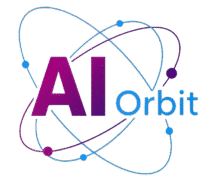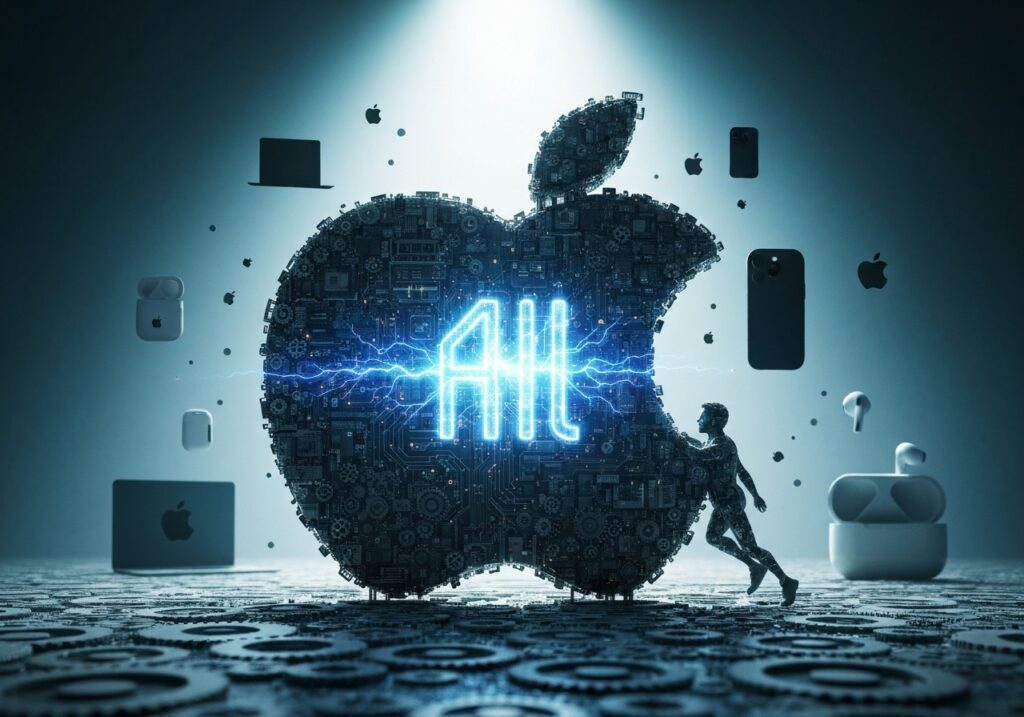In the fiercely competitive arena of artificial intelligence, Apple Inc. stands at a pivotal juncture. While renowned for its groundbreaking hardware and integrated ecosystem, the Cupertino giant faces an unprecedented challenge in the generative AI era: a potential need to dramatically recalibrate its long-standing merger and acquisition (M&A) strategy. Historically characterized by nimble, small-scale acquisitions focused primarily on talent and niche technologies, this cautious approach might no longer suffice in the race for AI supremacy. To truly thrive and maintain its innovation edge, Apple may need to step far outside its M&A comfort zone, embracing larger, more transformative deals that could reshape its future.
APPLE’S TRADITIONAL M&A PLAYBOOK
Apple’s M&A history is a masterclass in strategic minimalism. Unlike its tech titan peers, who frequently engage in blockbuster acquisitions running into the tens of billions, Apple’s typical acquisitions are discreet, often undisclosed, and rarely make headlines. The company’s strategy has largely revolved around “acqui-hires”—the acquisition of small startups primarily for their engineering talent and intellectual property, rather than for immediate market share or product integration. This approach has served Apple well in various domains, allowing it to incrementally enhance its core technologies, such as camera capabilities, mapping services, and voice recognition for Siri.
For instance, the acquisition of PrimeSense in 2013 provided the foundational technology for Face ID. Later, the purchase of Shazam helped bolster Apple Music. These were not deals intended to dominate a new market overnight but rather to meticulously weave cutting-edge features into Apple’s existing product lines, often with a significant lag time between acquisition and public implementation. This patient, methodical integration strategy aligns perfectly with Apple’s secretive culture and its emphasis on tightly controlled product development. The largest acquisition to date remains Beats Electronics for $3 billion in 2014, an outlier driven more by content and brand appeal than pure technological IP.
The benefits of this conservative M&A strategy are clear: reduced integration risks, easier cultural assimilation, and avoidance of antitrust scrutiny. It allows Apple to maintain its design philosophy and brand identity without the complexities of integrating massive, disparate corporate cultures or competing product lines. However, the rapidly evolving landscape of artificial intelligence, particularly generative AI, presents a unique set of challenges that may render this playbook increasingly obsolete.
THE AI IMPERATIVE
Artificial intelligence is not merely another feature; it is becoming the fundamental operating system for future technology. From enhancing user experience to optimizing device performance and driving new services, AI is poised to redefine how we interact with our digital world. For Apple, whose brand promise hinges on intuitive, powerful, and seamless user experiences, leadership in AI is not an option but a necessity. The company’s competitors, including Google, Microsoft, Amazon, and Meta, are making aggressive strides, investing billions and pursuing ambitious M&A strategies to secure their positions in the AI arms race.
Apple has significant AI capabilities, particularly in on-device intelligence. Its custom silicon, like the Neural Engine in its A-series and M-series chips, enables powerful machine learning tasks directly on the device, bolstering privacy and responsiveness. Siri, while often criticized, was an early pioneer in voice AI. However, the advent of large language models (LLMs) and generative AI has shifted the goalposts, demanding a different scale of data, computation, and specialized expertise.
The potential applications of advanced AI for Apple are vast:
- Enhanced Siri: A truly intelligent, context-aware digital assistant capable of complex conversations and task execution.
- Proactive Intelligence: Devices anticipating user needs, offering personalized recommendations, and automating routines.
- Content Creation: Tools for generating text, images, and video within Apple’s creative applications.
- Developer Tools: AI-powered frameworks for third-party developers, further enriching the App Store ecosystem.
- Accessibility: Revolutionary new features for users with disabilities.
- Next-Gen Hardware: AI as the core intelligence for future devices like augmented reality (AR) headsets and robotic assistants.
Failing to secure a leading position in these areas risks ceding ground to competitors and potentially eroding Apple’s long-held advantages in user experience and innovation.
THE GENERATIVE AI GAP
While Apple has been quietly building its AI foundations for years, the public emergence of generative AI models like OpenAI’s ChatGPT, Google’s Bard (now Gemini), and Microsoft’s Copilot has highlighted a perceived gap in Apple’s immediate offerings. These models demonstrate capabilities in understanding, generating, and summarizing information at a scale previously unimaginable. Competitors have either developed these foundational models internally or, crucially, acquired companies with the necessary expertise.
Microsoft’s massive investment in OpenAI, which began long before ChatGPT became a household name, is a prime example of a bold M&A-like move that has paid immense dividends. Google, despite its deep AI research division, continues to acquire AI startups to fill specific gaps or accelerate development. These actions reflect an understanding that in the rapidly evolving AI landscape, organic growth alone might be too slow to keep pace.
Apple’s challenge isn’t a lack of talent or resources, but rather a strategic choice. Building a state-of-the-art foundational model from scratch requires immense computational power, vast datasets, and a specialized team of researchers and engineers. While Apple undoubtedly has the capacity to do this internally, the time-to-market advantage gained through strategic acquisitions can be invaluable. The generative AI space is moving at breakneck speed, and hesitation can mean falling irrevocably behind.
WHY CURRENT M&A ISN’T ENOUGH
The traditional “acqui-hire” model, while effective for incremental improvements, falls short when the goal is to acquire foundational AI capabilities or significant market traction in a nascent but critical field. Here’s why:
- Scale of Data and Compute: Generative AI models thrive on massive datasets and require colossal computational resources for training. Acquiring small teams might bring talent, but not necessarily the trained models or the infrastructure built over years.
- Proprietary Models: The cutting edge of AI often involves proprietary architectures, training methodologies, and pre-trained models that represent years of research and investment. These are not easily replicated or built from scratch quickly.
- Time to Market: Developing a world-class foundational AI model takes years. Acquiring a company that already possesses a robust model or a significant head start can shave years off the development cycle, crucial in a fast-moving domain.
- Specialized Expertise: While Apple employs top AI researchers, the talent pool for specific, advanced areas like transformer architectures, diffusion models, or specialized AI hardware can be finite. Acquisitions can instantly onboard entire teams with a shared vision and established workflows.
- Competitive Pressure: Rivals are aggressively pursuing AI M&A. If Apple sticks to its small-deal strategy, it risks seeing valuable targets snapped up by competitors, potentially consolidating power and talent in rival ecosystems.
The current M&A approach is akin to buying individual bricks when the market demands a pre-fabricated building. While Apple is adept at laying bricks, the generative AI race requires a different construction methodology.
BREAKING THE COMFORT ZONE: TYPES OF M&A APPLE MIGHT NEED TO CONSIDER
To succeed in the generative AI era, Apple might need to consider acquisitions that are larger in scope, potentially involving companies with:
- Foundational AI Models: Companies that have developed general-purpose or specialized large language models, computer vision models, or multimodal AI systems. This would give Apple a significant head start.
- AI Infrastructure and Platforms: Acquiring firms specializing in AI development platforms, large-scale data annotation, or specialized AI cloud services could accelerate Apple’s internal capabilities and empower developers.
- Niche AI Applications with Strong User Bases: While Apple prefers to build, acquiring a successful AI-powered application could provide immediate market presence, user data, and a launchpad for integrating AI into its ecosystem.
- AI Hardware Innovation: Companies focused on novel AI accelerators, edge AI chips, or neuromorphic computing could strengthen Apple’s silicon advantage for on-device AI.
Such acquisitions would likely be in the billions of dollars, a scale Apple has historically avoided. However, the strategic imperative of AI may force this shift. Imagine Apple acquiring a leading generative AI startup, not just for its talent, but for its fully developed and trained models, and its entire research pipeline. This would instantly elevate Apple’s standing in the AI landscape, allowing it to rapidly integrate advanced capabilities into iOS, macOS, and its services.
The shift isn’t just about financial size; it’s about a fundamental change in integration philosophy. Instead of simply absorbing talent into its existing structure, Apple might need to allow acquired entities a greater degree of autonomy, at least initially, to foster the rapid innovation characteristic of the AI startup world.
CHALLENGES AND RISKS
Stepping out of its M&A comfort zone is not without significant challenges for Apple:
- Cultural Integration: Apple’s highly secretive, design-centric culture can be difficult for external teams to adapt to. Larger acquisitions increase the risk of cultural clashes and talent attrition.
- Regulatory Scrutiny: Big tech companies are under increasing antitrust scrutiny. Large AI acquisitions could attract intense regulatory review, potentially delaying or blocking deals.
- Valuation and Overpaying: The AI market is experiencing significant valuation inflation. Apple would need to justify paying premium prices for companies, especially those with unproven revenue models.
- Preserving Innovation: There’s a risk that integrating a vibrant, fast-moving AI startup into a massive corporate structure could stifle its innovation and agility.
- Maintaining Brand Purity: Apple is meticulous about its brand and product experience. Integrating external AI technologies requires careful curation to ensure they meet Apple’s high standards and privacy commitments.
Despite these risks, the cost of inaction or insufficient action in AI could be far greater. Falling behind in foundational AI could lead to a strategic disadvantage, impacting everything from product features to developer engagement and consumer perception.
THE PATH FORWARD
To succeed in AI, Apple will likely employ a multi-pronged approach that includes aggressive internal development, strategic partnerships, and, crucially, a revised M&A strategy. This new M&A strategy would involve:
- Targeted Big Buys: Identifying a few key, transformative AI companies that possess core technologies or foundational models essential for Apple’s long-term vision.
- Flexible Integration Models: Potentially allowing acquired AI teams greater autonomy to continue their research and development, rather than immediately dissolving them into Apple’s core structure.
- Proactive Scouting: Intensifying efforts to identify promising AI startups early, before their valuations skyrocket or they are snapped up by competitors.
- Balancing Privacy and Performance: Ensuring that any acquired AI technology can be integrated in a way that upholds Apple’s stringent privacy principles, a key differentiator.
The coming years will be definitive for Apple’s AI trajectory. Its ability to pivot its M&A strategy, moving beyond its traditional comfort zone, will be a strong indicator of its commitment to leading the next wave of technological innovation. It’s not just about buying companies; it’s about acquiring the future.
The tech world is watching closely to see if the company known for its unwavering focus and deliberate pace can adapt its long-held strategies to the explosive, unpredictable demands of the artificial intelligence revolution.

